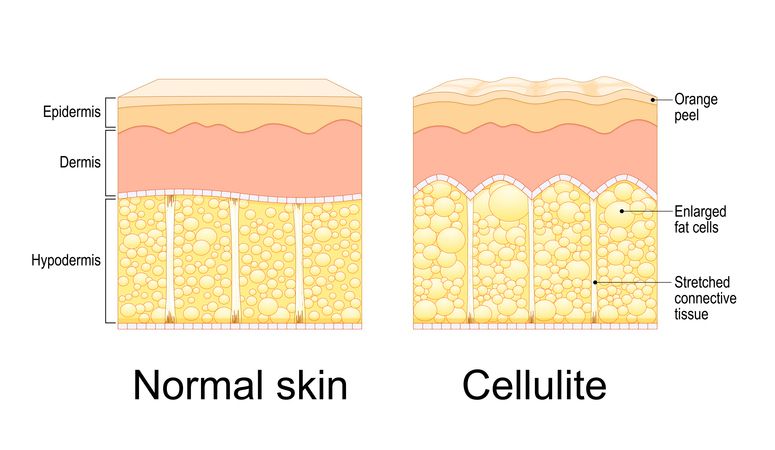
Author: Natalie Ng|Updated: 29 April 2025
Waxing usually lasts longer than plucking because it removes multiple hairs from the root in one go. This not only pulls them out evenly and in the same growth stage, but also weakens the follicles over time. That means slower, finer regrowth and fewer stray hairs. Plucking only targets one hair at a time. It’s precise but can lead to uneven regrowth and breakage. Waxing works in larger areas, creating a more consistent result. It also exfoliates dead skin cells, helping prevent ingrown hairs and leaving the skin smoother—especially in spots like the upper lip, bikini line, or brows. If you're choosing between hair removal methods like waxing, plucking, shaving, or laser hair removal, it helps to know how each one affects hair follicles, skin sensitivity, and future hair growth. Up next, we’ll explain why waxing impacts follicles more deeply than plucking—and why that matters for smoother, longer-lasting results.

Reason 1: Waxing Removes Multiple Hairs from the Root at Once
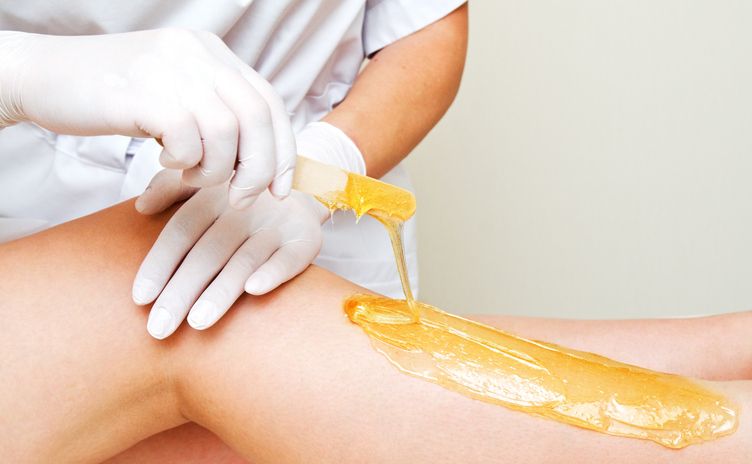
Waxing is a hair removal method that extracts multiple hairs directly from their follicles in one swift motion. This contrasts with plucking, which targets individual hairs one at a time.
Efficiency and Coverage
Waxing is particularly efficient for removing hair over larger areas of the body, such as the legs, arms, back, and chest. The process involves applying a layer of wax over the skin and then swiftly removing it, pulling out multiple hairs simultaneously. This makes waxing a time-saving option for those seeking to remove hair from extensive regions. In contrast, plucking each hair individually can be time-consuming and is generally more suitable for smaller areas requiring precision, like shaping eyebrows or removing a few stray facial hairs.
Longer-Lasting Smoothness
By removing hairs from the root, waxing provides longer-lasting smoothness compared to methods that only cut hair at the surface, such as shaving. After waxing, the skin can remain hair-free for several weeks, depending on individual hair growth cycles. This is because the entire hair, including the bulb, is extracted, and the follicle needs time to regenerate a new hair.
Impact on Hair Regrowth
Regular waxing can also influence the nature of hair regrowth. Over time, consistent waxing may lead to finer and sparser hair, as repeated removal can weaken the hair follicles. This can make future waxing sessions more comfortable and further extend the duration of smooth skin between sessions.
In summary, waxing's ability to remove multiple hairs from the root at once makes it an efficient and effective hair removal method, especially for larger body areas. It offers longer-lasting smoothness and can lead to finer hair regrowth over time, enhancing the overall benefits of this hair removal technique.

Reason 2: Waxing Creates an Even Regrowth Pattern
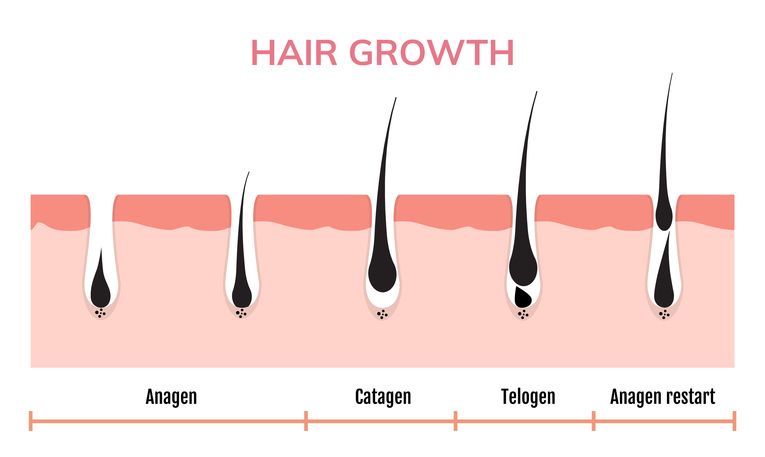
One of the major benefits of waxing over plucking is how it affects hair regrowth. When you wax, all the hairs in the treated area are pulled out at the same time and from the same stage of growth. This results in a more even and consistent regrowth pattern.
Uniform Hair Length and Growth Cycle
Hair grows in cycles—anagen (growth), catagen (transition), and telogen (resting). When you wax, you remove hairs from the root during their current phase. By doing this across an entire area at once, waxing helps synchronize the hair growth cycle in that area. This means that when the hair grows back, it often does so at the same length and rate, which keeps the skin smoother for longer.
Plucking, on the other hand, removes individual hairs at random points in their cycle. So even if your skin looks smooth for a few days, new stray hairs can start popping up unevenly as others regrow. This makes the area appear patchy and requires more frequent touch-ups to stay hair-free.
Long-Term Visual Results
With consistent waxing sessions, this synchronization becomes more noticeable. You’ll see fewer awkward stages of short regrowth and more predictable hair patterns, making it easier to schedule your next waxing appointment and maintain smooth skin.
By encouraging hairs to grow back evenly, waxing helps reduce the need for constant upkeep—especially helpful in high-visibility areas like the eyebrows, upper lip, and bikini area. It also reduces the urge to tweeze a few stray hairs, which disrupts the synchronized regrowth and sets the cycle back.
This consistent growth pattern is one of the reasons waxing is generally considered a more effective hair removal method for longer-term results compared to plucking.
Read More
Book Now to Experience
A3 Laser Hair Removal Treatment
1 Minute Self-Registration
Date should not be before minimal date

Reason 3: Waxing Weakens Hair Follicles Over Time
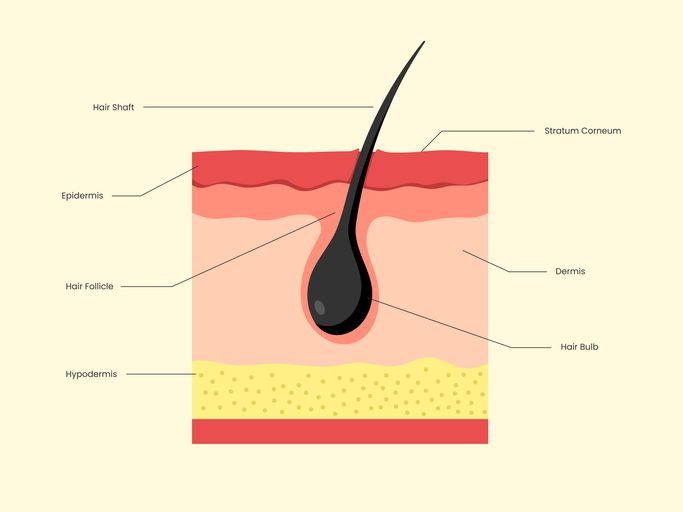
One of the long-term advantages of waxing is its impact on the hair follicles themselves. When you remove hair from the root repeatedly, the follicle undergoes minor trauma. Over time, this weakens its ability to grow thick, strong hair.
How Follicle Damage Happens
Every time you wax, the wax sticks to the hair shaft and pulls it out from deep within the follicle. This action disrupts the follicle structure slightly. While this doesn’t cause permanent damage, the repeated stress can reduce its function. The result? Finer hair, slower regrowth, and, in many cases, reduced hair density in that area.
This is particularly noticeable in areas that are waxed regularly—like the bikini line, legs, or upper lip. After several sessions, hair often grows back thinner and softer. You may even notice that certain patches produce less hair altogether.
Plucking Doesn’t Have the Same Effect
Plucking individual hairs can also remove them from the root, but the impact is limited. Because you're removing hairs one at a time and not in sync, the follicles don’t receive the same repeated trauma. This makes plucking less effective at reducing future hair growth or thinning the hair out long term.
While waxing doesn’t stop hair growth completely, it can lead to progressive hair thinning and slowed regrowth when done consistently. That’s why many people see better long-term results with waxing, especially in combination with other hair removal methods like laser hair removal.

Reason 4: Waxing Exfoliates Dead Skin Cells
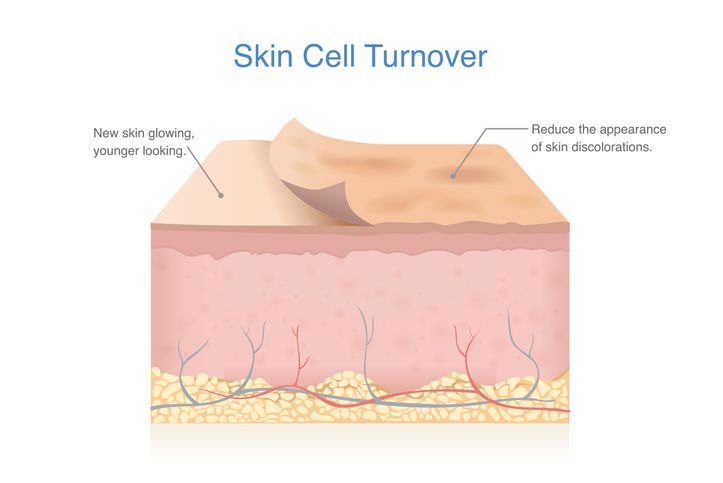
Waxing does more than just remove unwanted hair—it also exfoliates the skin. When the wax is pulled off, it lifts not only the hair but also the top layer of dead skin cells. This light exfoliation helps clear blocked pores, improve skin texture, and reduce the risk of ingrown hairs.
Why Exfoliation Matters
Dead skin cells can build up and trap growing hairs under the surface. This often leads to ingrown hairs, especially in high-friction areas like the bikini area, underarms, and upper lip. Ingrowns can be painful, cause skin irritation, and even lead to infection or scarring if not treated properly.
Because waxing clears away these dead cells with each session, it leaves the skin cleaner and smoother. This makes it easier for new hair growth to break through the surface naturally, without curling back under the skin.
Plucking Doesn’t Exfoliate
Plucking only targets the hair and doesn’t impact the surrounding skin. As a result, it doesn’t prevent ingrown hairs or help with surface buildup. In fact, frequent plucking can actually increase the risk of ingrowns—especially when hairs break off unevenly or grow back in the opposite direction.
Waxing is a better option for people with sensitive skin, frequent ingrowns, or thicker body hair, since it both removes the hair from the root and supports clearer skin. This dual action is one reason many switch to waxing over other hair removal methods like shaving or hair removal creams, which can leave the skin dry, irritated, or clogged.
Book Now to Experience
A3 Laser Hair Removal Treatment
1 Minute Self-Registration
Date should not be before minimal date

Reason 5: Waxing Synchronizes Hair Growth Cycles

One of the most overlooked benefits of waxing is how it helps synchronize the hair growth cycle. When you wax an area, you remove all visible hairs in that zone at the same time and from the same growth stage. Over repeated sessions, this encourages more hairs to follow a similar growth rhythm.
Hair Growth Has Phases
Your hair grows in three main phases:
• Anagen (growth phase)
• Catagen (transition phase)
• Telogen (resting phase)
Not all hairs are in the same phase at the same time. That’s why some grow back sooner than others after hair removal.
When you pluck individual hairs, you’re only removing some at random stages of this cycle. That leaves others behind to grow at their own pace, causing uneven regrowth. You’ll see stray hairs appear earlier and feel rough patches as hair grows in unevenly.
Waxing Creates More Predictable Regrowth
By removing many hairs at once, waxing helps reset the cycle in the treated area. Over time, this leads to more consistent new hair growth, with hairs appearing at the same length and speed. This makes skin feel smoother for longer and simplifies maintenance between sessions.
This is especially helpful in areas like the bikini line, underarms, and facial hair zones, where even regrowth matters for appearance and comfort.
Waxing also pairs well with other hair removal methods like laser hair removal, which also relies on targeting hair in the active growth phase. Syncing growth through waxing can even improve the effectiveness of those treatments.

Reason 6: Waxing Reduces Hair Thickness and Density Over Time
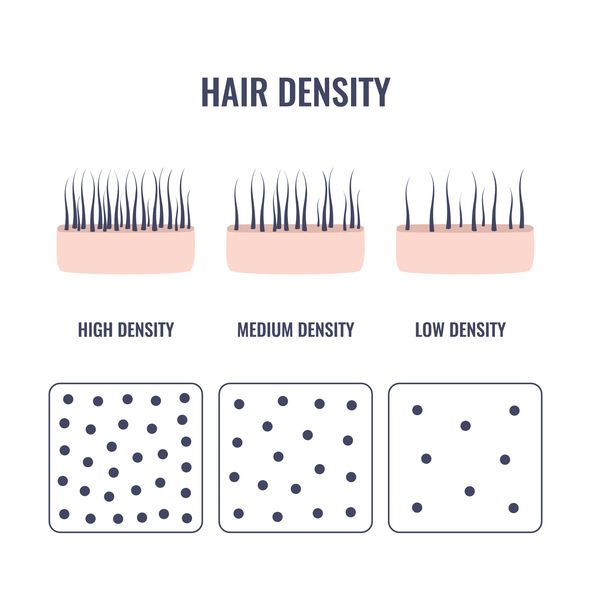
With regular waxing, most people start to notice that their hair grows back finer, softer, and in smaller quantities. This change happens gradually, but the effect becomes clearer with each session.
Why Hair Gets Thinner with Waxing
Each time you wax, you remove hair from the root. This weakens the hair follicle, especially when the same area is waxed repeatedly. Weaker follicles produce thinner strands, and in some cases, they may stop producing hair altogether for a period.
Over time, you’ll see:
• Less dense regrowth
• Finer hair texture
• Longer gaps between waxing appointments
This is especially helpful for people with coarse or thick body hair, or those dealing with noticeable facial hair. Many people who wax areas like the upper lip, bikini area, or underarms regularly report easier upkeep and fewer sessions needed after a few months.
Plucking Can’t Match These Results
Plucking doesn’t apply the same consistent pressure across large areas, so its impact on long-term hair type and growth patterns is limited. It also lacks the broader skin contact that contributes to weakening the follicles in groups, as waxing does.
While hair removal creams, shaving, and depilatory creams offer quick fixes, they don’t affect the follicle. Waxing stands out as a hair removal method that not only clears the surface but also gradually changes how and where new hair grows.
This is why waxing is often chosen as a longer-term solution, especially for those wanting more manageable and less noticeable hair regrowth—without the high cost of treatments like laser hair removal.
If you're looking for smoother skin, fewer stray hairs, and less time spent on maintenance, continuous waxing can help you achieve optimal results over time.

A3 Laser Hair Removal: A Longer-Term Alternative to Waxing and Plucking
Hair removal is a routine part of personal care, but common methods like waxing and plucking individual hairs have their downsides. While they remove hair from the root, they don’t stop it from growing back. As a result, unwanted hair keeps returning, creating a never-ending cycle of waxing appointments, plucking sessions, and touch-ups.
The Ongoing Problems with Waxing and Plucking
Waxing removes multiple hairs in one motion, but it doesn’t affect the actual hair follicles. Regrowth often starts within a few weeks, and it can lead to ingrown hairs, skin irritation, and redness—especially in sensitive skin zones like the bikini area, underarms, or upper lip. The use of hot wax can also trigger inflammation or reactions in certain skin types.
Plucking, while useful for precise areas like shaping eyebrows or removing stray hairs, is time-consuming and inconsistent. Since it pulls out hairs one by one, new hair growth appears at different times and lengths. This scattered regrowth makes it harder to maintain smooth skin and requires frequent maintenance. Repeated plucking can also cause hair breakage, follicle damage, and skin sensitivity.
These methods don’t stop future hair growth—they only delay it. That’s where the A3 Laser Hair Removal Treatment stands out.
How the A3 Laser Hair Removal Treatment Works
The A3 treatment uses 808nm wavelength laser energy to go beneath the surface of the skin and directly target the hair follicles. The laser tracks melanin (pigment) in the hair, then penetrates deep enough to shrink the capillaries that supply nutrients to the follicle. Without that blood flow, the follicle becomes inactive—and stops producing new hair strands.
The treatment uses a 10mm x 10mm square handpiece, allowing it to remove up to 500 hairs per second. It covers large areas quickly and evenly, which is ideal for the legs, arms, chest, back, and even facial hair.
Built-In Comfort for Sensitive Skin
What sets the A3 apart from many other hair removal methods is the built-in dual cooling system. While the laser works below the skin, the tip of the handpiece stays cool on the surface. This soothes the skin instantly, reducing discomfort and minimizing the chance of skin irritation, redness, or allergic reactions—common side effects after waxing or using depilatory creams.
There’s no need for additional fans, cooling gels, or downtime. Most people go back to their normal routine right after the treatment.
Why A3 Is a Better Long-Term Option
Compared to waxing or plucking, the A3 treatment offers:
• Longer-lasting results by treating the root cause of hair growth
• Fewer ingrown hairs, since follicles are deactivated—not pulled or broken
• Smoother regrowth with finer hair over time
• Fast sessions, removing large amounts of body hair efficiently
• Safe use on most skin types, including those with sensitive skin
• No downtime, wounds, or surface damage
And unlike shaving, hair removal creams, or plucking individual hairs, you won’t have to deal with shaving cuts, uneven regrowth, or constant touch-ups. After several sessions, most people see a visible reduction in hair density, and for some, hair stops growing altogether in certain areas.
If you're frustrated with the short-term results of waxing or the time commitment of plucking, the A3 Laser Hair Removal Treatment offers a more reliable, effective, and skin-friendly solution.
Ready to stop the cycle of constant regrowth? Book your A3 Laser Hair Removal consultation today and take the first step toward smoother, low-maintenance skin.
New Beauty's A3 Laser Hair Removal TreatmentBook Now to Experience
A3 Laser Hair Removal Treatment
1 Minute Self-Registration
Date should not be before minimal date
FAQ
Does Waxing Increase the Likelihood of Developing Ingrown Hairs Compared to Plucking?
Both waxing and plucking can cause ingrown hairs, but waxing typically carries a lower risk. When you wax, you're removing hair in the natural direction of growth, which reduces the likelihood of hairs growing sideways or curling back into the skin. Additionally, waxing removes hair more cleanly at the root, while plucking can sometimes break the hair, creating sharp edges that more easily become ingrown.
At What Age Is It Safe to Start Regular Waxing Treatments?
As with most beauty rituals since time immemorial, there's no universal age to start waxing, but you'll want to wait until puberty's well underway. Most experts recommend starting no earlier than 13-14 years old, when your skin's maturity can better handle the treatment. You should also check with your healthcare provider first, especially if you're dealing with sensitive skin or hormonal changes. Regular waxing sessions are safe once you've reached this developmental milestone.
Can Certain Medications Affect How Long Waxing Results Last?
Several medications can affect your waxing results. 1) Blood thinners and anticoagulants can increase sensitivity and bruising. 2) Retinoids, including tretinoin and isotretinoin, make skin more delicate and prone to tearing. 3) Antibiotics might increase skin sensitivity. 4) Hormonal medications, like birth control or hormone replacement therapy, can affect hair growth patterns and impact how long your waxing results last. Always inform your esthetician about medications you're taking.
Is Waxing or Plucking Better for Sensitive Areas Like Eyebrows?
For sensitive areas like eyebrows, waxing is generally more effective and less traumatic to your skin than repetitive plucking. While both methods remove hair from the root, waxing removes multiple hairs simultaneously, reducing overall skin irritation. However, if you've got particularly sensitive skin or use certain skincare products, plucking might be safer since it offers more precise control and doesn't expose larger areas to potential reactions.
How Does Skin Type Influence the Effectiveness of Waxing Versus Plucking?
Your skin type directly impacts your hair removal choices. If you've got oily skin, you'll find waxing more effective as it grips hair better, while those with dry or sensitive skin might prefer plucking's precision. Combination skin types can benefit from both methods, but you'll need to watch for irritation in oilier zones when waxing and be gentle when plucking in sensitive areas.
Recommended Articles
COPYRIGHT© NEW BEAUTY MANAGEMENT LIMITED 2025. ALL RIGHT RESERVED.

